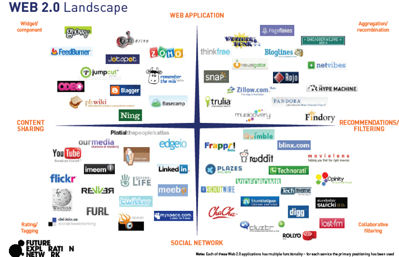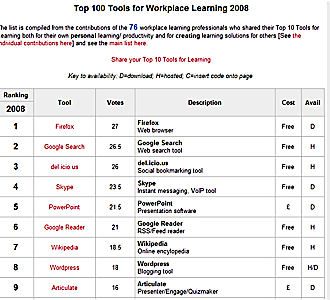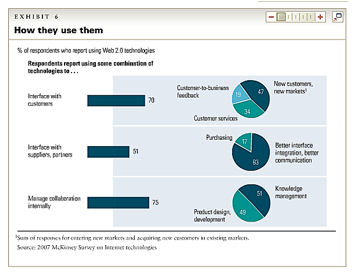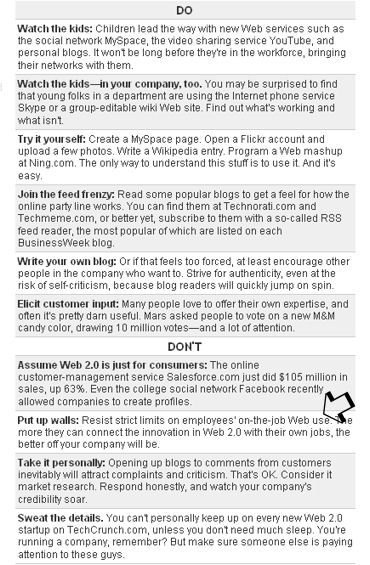You may have heard the Millennials generation using terms such as Wiki, Furl, Facebook, Flickr and wondered what are they talking about. These and more are components of Web 2.0, and no this is not a new Internet hardware architecture.
Web 1.0 involved companies, webmasters and individuals developing websites and posting various content. You could look at the content and maybe buy something online but little more. Then certain applications or apps began showing up that allowed you to add your own content to other’s websites, to interact with other visitors collaborate with team members and much more. The result uses of the Internet vastly expanded and Web 2.0 evolved.
The Future Explorations Network developed a Web 2.0 Landscape (you can download the PDF containing this image at their site).
It is likely that this Landscape is already out of date since new apps are appearing continuously. If you want to find out more about specific apps, go to the Centre For Learning And Perforce where you will see a display of the top 100 web 2.0 apps.
Now let us look at how organizations are using Web 2.0. McKinsey Consultants conducted a Web 2.0 survey of senior corporate managers. Key points from the survey include —
- Respondents show widespread but careful interest in Web 2.0 trends
- Expressing satisfaction with their Internet investments so far, they say that Web 2.0 technologies are strategic and that they plan to increase these investments
- Companies aren’t necessarily relying on the best-known Web 2.0 trends, such as blogs; instead, they place the greatest importance on technologies that enable automation and networking.
While McKinsey’s survey presents corporate wide applications there are many smaller intra-corporation Web 2.0 uses such as project management, team building, best practices sharing and others.
In a recent executive survey of marketplace trends by Forum Consulting Web 2.0 was identified as a key trend–
Using Web 2.0 Technology: Now, Not Futuristic: Web 2.0 technologies are used for both internal collaboration and as an interface with suppliers and customers, enhancing communication, collaboration, and intimacy among employees and the marketplace. Web 2.0 is certainly not just for tech-savvy teenagers: 79 percent of organizations view the collaborative aspects of Web 2.0 as a way to increase corporate revenue and/or margins.
Businessweek offers a Tip Sheet for using Web2.0. I agree with most, but see item pointed.
There are many opportunities for using Web 2.0 but there are risks that intellectual assets may seep out to competitors. There must be a delicate balance between promoting innovative use of Web 2.0 applications and protecting corporate assets. A worthy read is Cisco’s Internet Postings Policy.
Now you are ready to blog, wiki, Digg, and Furl, but be careful out there.
Ed Konczal has an MBA from New York University's Stern School of Business (with distinction). He has spent the last 10 years as an executive consultant focusing on human resources, leadership, market research, and business planning. Ed has over 10 years of top-level experience from AT&T in the areas of new ventures and business planning. He is co-author of the book "Simple Stories for Leadership Insight," published by University Press of America.



